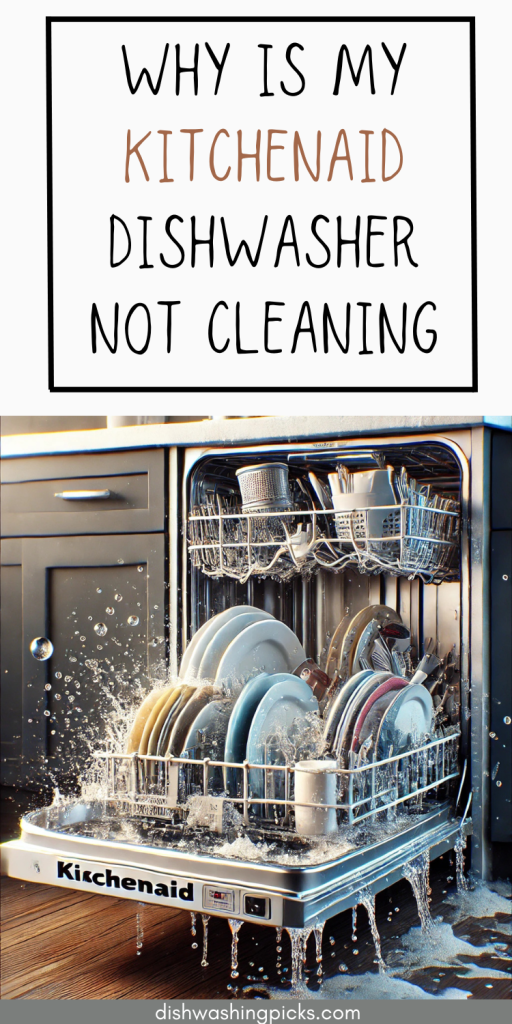
You load up your KitchenAid dishwasher, press start, and wait for the magic to happen. But when you open it up, instead of sparkling clean dishes, you’re greeted with… grime? Spots? Maybe even leftover food? Frustrating, right?
Don’t worry—you’re not alone. If your KitchenAid dishwasher isn’t cleaning properly, there’s a reason behind it (and luckily, a fix too). Let’s break it down and get your dishwasher back to doing what it does best.
1. Clogged Spray Arms – Water’s Not Reaching Your Dishes
Imagine trying to shower with a clogged showerhead—it wouldn’t be very effective, right? Your dishwasher’s spray arms work the same way. If they’re clogged with food debris, mineral buildup, or grease, they won’t be able to spray water properly. And no water = no clean dishes.
How to Fix It:
- Remove the spray arms (check your manual if you need help).
- Rinse them under warm water and use a toothpick or small brush to clear any clogged holes.
- If mineral buildup is an issue, soak them in a vinegar solution for about 30 minutes.
If your dishes are still coming out dirty, the problem might not be the spray arms alone. Let’s keep going.
2. Dirty or Clogged Filter – The Secret Dirt Trap
Your dishwasher’s filter is like a catch-all for food particles and gunk. But if it gets too clogged, your dishwasher will end up washing your dishes with dirty water—yuck!
How to Clean It:
- Locate the filter (usually at the bottom of the dishwasher).
- Remove it and rinse it under warm water.
- Use a soft brush to scrub away any stubborn food particles.
- Reinstall it and make sure it’s secured properly.
A clogged filter can lead to weak water flow, which brings us to our next potential issue…
3. Low Water Pressure – Is Your Dishwasher Thirsty?
Your KitchenAid dishwasher needs a strong, steady flow of water to clean effectively. If your water pressure is weak, it won’t have enough power to blast off grease and food residue.
What to Check:
- Run your kitchen sink—if the water pressure seems low, your home’s plumbing could be the issue.
- Make sure the dishwasher’s water inlet valve isn’t clogged or malfunctioning.
- Check for kinks in the water supply hose.
Still not the culprit? Let’s look at another common mistake…
4. Overloading – Are You Cramming Too Many Dishes In?
We’ve all been there—trying to fit just one more plate into the dishwasher to avoid hand-washing. But overloading can block the spray arms and prevent water from reaching all your dishes.
Loading Like a Pro:
- Keep large items away from the spray arms—they need room to spin.
- Avoid stacking dishes too tightly; water needs to circulate freely.
- Face dirty surfaces toward the center, where most of the water pressure is concentrated.
If you’re loading properly and still not getting clean dishes, detergent might be the culprit.
5. The Wrong Detergent or No Rinse Aid
Not all detergents are created equal. Cheap or expired detergent might not dissolve properly, leaving behind residue or failing to break down grease.
Try This:
- Switch to a high-quality detergent (powder or pods tend to work better than liquid).
- Use rinse aid—it helps water rinse away food particles and prevents spots.
- If you have hard water, consider adding a water softener to prevent mineral buildup.
Final Thoughts – Give Your KitchenAid Some TLC
A poorly performing dishwasher doesn’t mean it’s time to replace it—most issues come down to simple maintenance. By cleaning the spray arms, checking the filter, ensuring good water flow, and using the right detergent, you can get your KitchenAid dishwasher back to peak performance.
